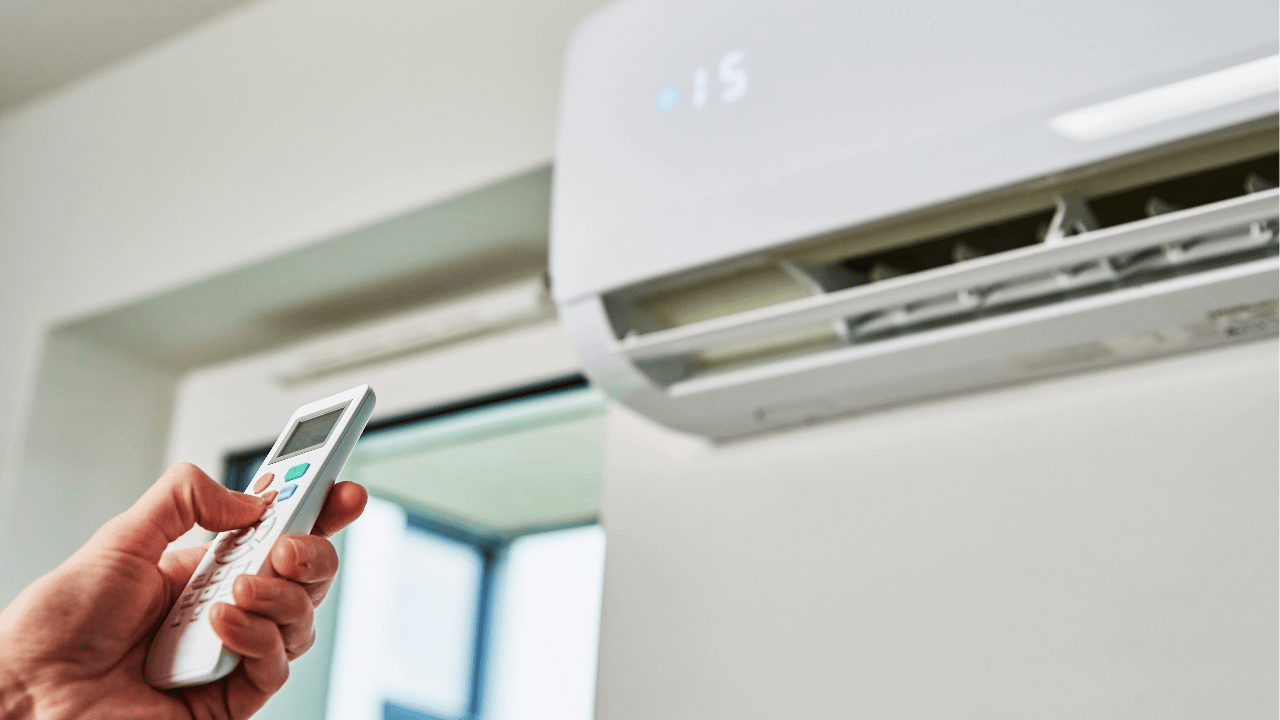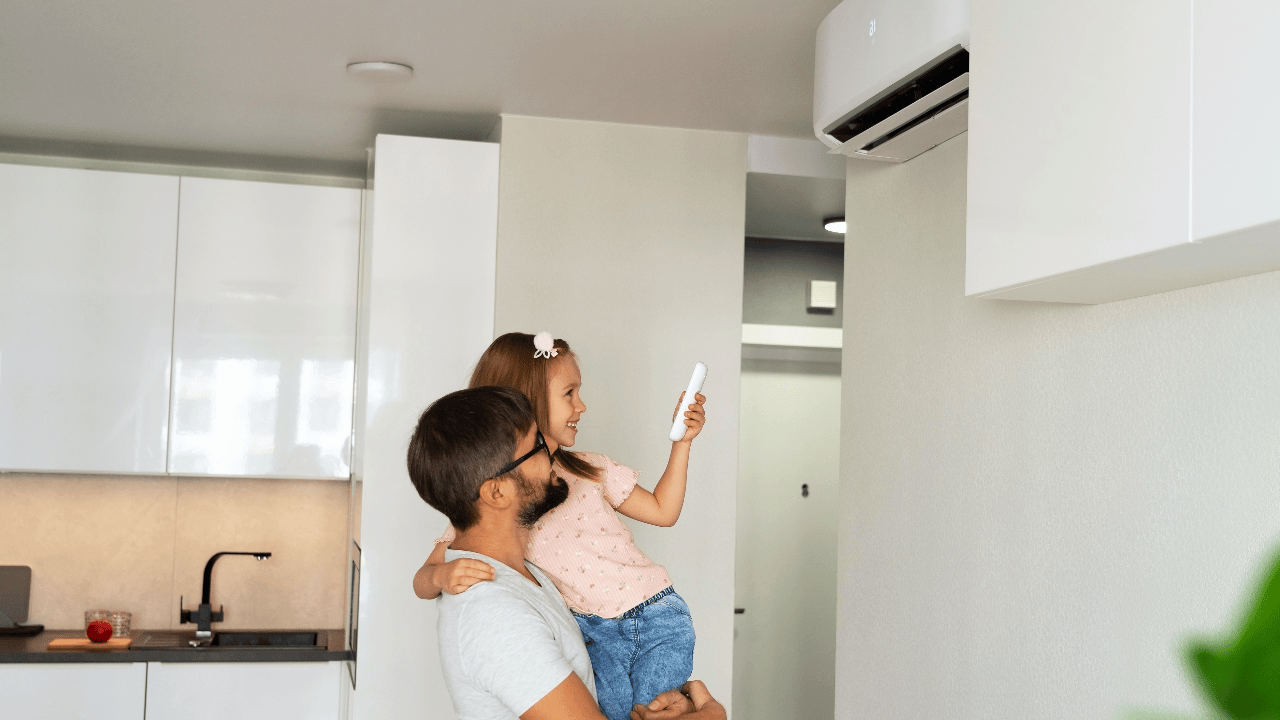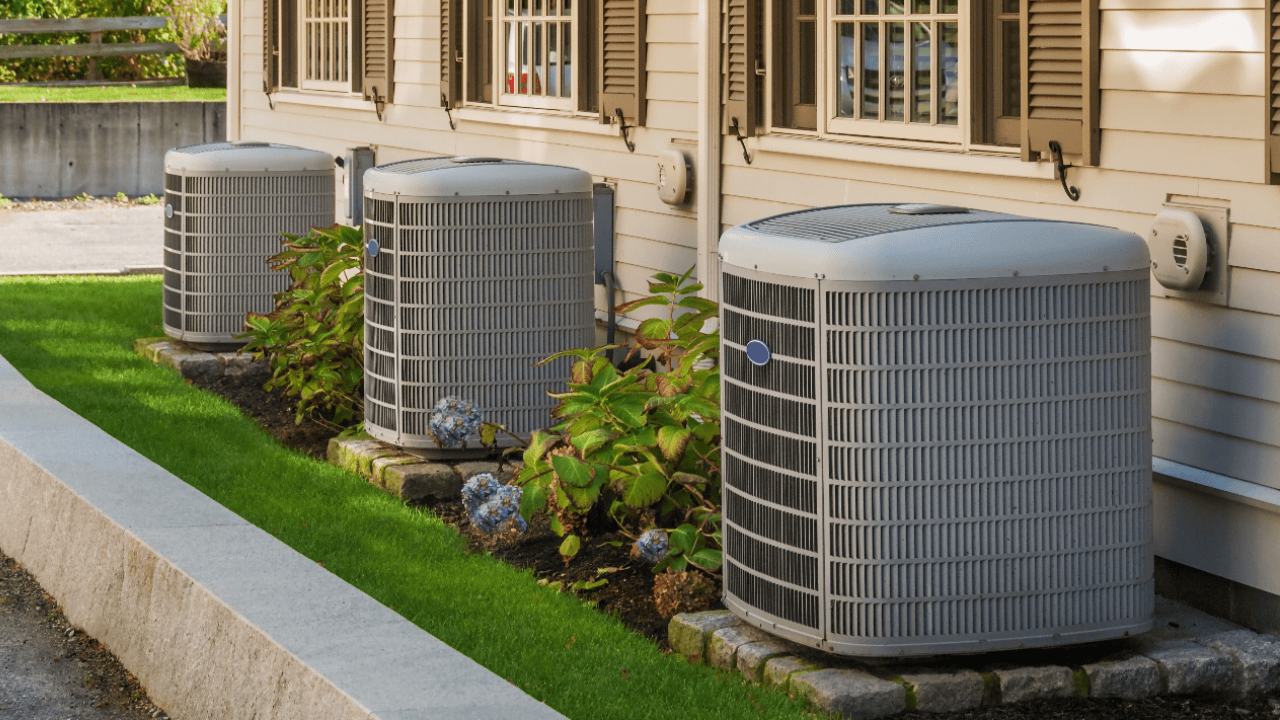
Air conditioning technology has become an indispensable part of modern life, offering more than just comfort; it's a necessity in many parts of the world. From producing cool air to enhancing indoor air quality, air conditioners play a pivotal role in our daily lives. The journey of air conditioning systems, from luxury items to household essentials, reflects a fascinating evolution of innovation and engineering.
The earliest concepts of air conditioning date back to ancient civilizations, but the real transformation occurred in the 20th century. This period witnessed the development of the first modern air conditioners, initially designed for industrial use, and gradually adapted for residential and commercial environments. Today, air conditioning is not just about cooling a space; it involves sophisticated systems like split system air conditioners, central air conditioning units, and advanced HVAC systems that offer efficient temperature control and air filtration.
Modern air conditioners come in various forms, including window units, portable AC units, and the increasingly popular split systems. Central air conditioning, in particular, has revolutionized how we cool large spaces efficiently. These systems use a network of ducts and vents to distribute cooled air evenly throughout buildings, ensuring a comfortable and consistent temperature in every room.
Moreover, technological advancements have led to significant improvements in energy efficiency. Features like programmable thermostats, inverter technology, and Seasonal Energy Efficiency Ratio (SEER) ratings help consumers make informed choices about their air conditioning systems, balancing comfort with environmental responsibility.
As we delve deeper into the workings of different air conditioning systems, we'll explore not just how they provide relief from warm air but also how they contribute to a healthier indoor environment by filtering out airborne particles and maintaining optimal humidity levels. Whether it's a central air system or a ductless air conditioner, understanding the mechanics behind these cooling systems can help us appreciate and make better use of them in our daily lives.
Join our newsletter
Stay on top of the latest in landscaping and lawn care with one valuable tip right in your inbox every Saturday morning.
The Basics of Air Conditioning Systems
Understanding how air conditioners function to cool spaces is key to appreciating these modern marvels. At its core, an air conditioner operates on a simple principle: it removes heat from indoor air and transfers it outside, leaving behind cooler, more comfortable air. This process involves several critical steps and components, each playing a vital role in cooling our homes and workplaces.
- Heat Absorption: The journey of cooling starts inside the air conditioner, where a cold evaporator coil filled with refrigerant absorbs heat from the indoor air. As warm air passes over this coil, the refrigerant inside captures the heat, turning from a liquid to a gas.
- Heat Transfer: Once the refrigerant absorbs the heat, it travels to the outdoor unit. Here, the refrigerant, now in a gaseous state, releases the absorbed heat to the outdoor air. This process is facilitated by the condenser coil, where the refrigerant is condensed back into a liquid.
- Circulation and Cooling: After releasing the heat, the refrigerant cycles back to the indoor unit. This continuous cycle of refrigerant ensures a steady extraction of warm air from inside, constantly circulating and cooling the indoor air.
The role of refrigerants in air conditioning is pivotal. Refrigerants are special substances chosen for their unique properties, particularly their ability to change states at convenient temperatures for heat absorption and release. Modern air conditioners use environmentally friendly refrigerants, reflecting an industry-wide shift towards sustainability.
This fundamental process of heat transfer, enabled by refrigerants, is what makes air conditioners so effective. It's not just about producing cold air; it's a sophisticated cycle of heat absorption, transfer, and removal, ensuring that your space remains cool and comfortable.
As we explore more about central air conditioning systems and split system air conditioners, we'll delve into the intricacies of these systems, including how they manage to maintain consistent indoor temperatures and improve indoor air quality. Understanding these basics lays the groundwork for a deeper appreciation of the air conditioning technology that keeps us cool.

Air Conditioners: Types and Components
Air conditioners come in various types, each designed to meet specific needs and environmental conditions. Understanding these different types and their key components helps in selecting the right air conditioning solution for your space.
Types of Air Conditioners
- Central Air Conditioners: Ideal for cooling large spaces and entire homes, central air conditioners circulate cool air through a system of ducts and vents. They are known for their efficiency in maintaining a uniform temperature throughout large areas.
- Window Air Conditioners: A compact option for single rooms, window units are easy to install and are a popular choice for temporary or small-space cooling.
- Split System Air Conditioners: These systems consist of an outdoor unit (housing the compressor and condenser) and one or more indoor units (with evaporators). Split systems are known for their quiet operation and aesthetic appeal, as they require no ductwork.
- Portable Air Conditioners: As the name suggests, these are mobile units that can be moved from room to room, offering a flexible cooling solution.
Key Components of an Air Conditioner
Every air conditioner, regardless of its type, operates using the following key components:
- Compressor: Often referred to as the heart of the air conditioning system, the compressor's primary role is to circulate the refrigerant between the evaporator and condenser coils.
- Condenser Coil: Located in the outdoor unit, the condenser coil releases the absorbed heat from the indoor air to the outside environment.
- Evaporator Coil: Situated in the indoor unit, this coil absorbs heat from the indoor air, helping to cool it down.
- Refrigerant: A specialized fluid that flows within the air conditioning system, facilitating the transfer of heat from inside to outside the space.
- Thermostat: This component regulates the air temperature by controlling the air conditioning system's operation, maintaining the desired level of comfort.
- Air Filter: Essential for maintaining indoor air quality, the air filter traps dust, pollen, and other airborne particles.
Each type of air conditioner and its components play a critical role in providing efficient cooling. When choosing an air conditioning system, consider factors like the size of your space, installation requirements, and energy efficiency. Whether it's a robust central air system or a convenient split system, the right choice can greatly enhance your living or working environment.
In the next sections, we'll delve deeper into specific systems, such as central air conditioning and split system air conditioners, to understand how they operate and how to choose the best option for your needs.
Central Air Conditioning: A Closer Look
Central air conditioning systems are the backbone of modern climate control, especially in larger residential and commercial spaces. These systems, often simply referred to as central air, provide efficient cooling and heating solutions, ensuring comfort regardless of the external weather conditions.
Mechanics of Central Air Conditioning Systems
Central air conditioning systems operate on the principle of transferring heat from the indoor environment to the outdoor environment. Here's how they work:
- Heat Absorption: Inside the building, the air is cooled as it passes over the evaporator coil of the indoor unit. This coil, filled with refrigerant, absorbs heat from the indoor air, effectively removing the warm air from the space.
- Heat Transfer and Release: The heated refrigerant, now in a gaseous state, is pumped to the outdoor unit by the compressor. Here, the condenser coil facilitates the release of the absorbed heat to the outside air.
- Circulation: Once the heat is expelled, the refrigerant is recycled back to the indoor unit, ready to absorb more heat. This cycle continues, maintaining a steady flow of cool air inside the building.
Advantages of Central Air Over Other Types
Central air conditioning systems offer several advantages over other types of air conditioners:
- Uniform Cooling: Central air systems distribute cooled air evenly throughout the entire building, eliminating hot spots and ensuring consistent comfort in all rooms.
- Improved Air Quality: These systems are equipped with air filters that trap dust, allergens, and other airborne particles, enhancing the indoor air quality.
- Quieter Operation: Unlike window or portable air conditioners, the noisy components of central air systems (like the compressor and fan) are located outside, leading to quieter operation indoors.
- Energy Efficiency: Modern central air conditioners are designed for high efficiency, with features like programmable thermostats and SEER ratings that reduce energy consumption and costs.
- Aesthetic and Space-Saving: Central air conditioning systems are less obtrusive and don't take up window or floor space, preserving the aesthetic appeal and usable space of your interiors.
Central air conditioning systems, with their efficient cooling and heating capabilities, are ideal for maintaining a comfortable and healthy living environment. Whether it's a new air conditioner you're considering or upgrading your existing system, understanding the mechanics and benefits of central air can guide you in making an informed decision.
In the following sections, we will explore more about specific components like the evaporator coil and the condenser unit, and how they contribute to the efficiency of a central air conditioning system.

How Central Air Conditioners Work
Central air conditioners are not just about providing relief from the heat; they are complex systems designed to maintain a consistent and comfortable indoor environment. Let’s delve into the detailed working process of these systems and understand the cycle of cool air production and distribution.
The Working Process of Central Air Conditioners
- Thermostat Setting: The process begins with the thermostat, the control center of the air conditioning system. Here, you set the desired temperature for your space.
- Activating the System: Once the indoor temperature rises above the thermostat setting, the air conditioning system activates. The indoor unit's blower fan starts drawing warm indoor air through the return air ducts.
- Air Filtration and Cooling: As the air passes through, it is filtered to remove dust and airborne particles. The air then flows over the cold evaporator coil. Here, the refrigerant inside the coil absorbs heat from the air, cooling it down.
- Heat Transfer to the Outside: The refrigerant, now heated and transformed into a gas, travels to the outdoor unit. In the outdoor unit, the condenser coil and the fan work together to expel the absorbed heat into the outdoor air.
- Recycling the Refrigerant: The refrigerant, having released its heat, is converted back into a liquid and returned to the indoor unit, ready to absorb more heat.
- Distribution of Cooled Air: The cool air, now at the desired temperature, is circulated back into the building through a series of ducts and vents.
The Cycle of Cool Air Production and Distribution
This process constitutes a cycle that repeats as long as the air conditioner is on and the thermostat indicates the need for cooling. The cycle ensures that the indoor air remains at the desired temperature, providing continuous comfort.
- Efficient Circulation: Central air conditioners are designed to circulate air evenly throughout the entire space, ensuring that there are no hot or cold spots in the room.
- Maintaining Indoor Air Quality: With continuous air filtration and circulation, central air conditioners also play a significant role in maintaining healthy indoor air quality.
Understanding how central air conditioners work is essential not just for utilizing them effectively but also for recognizing the importance of regular maintenance to keep the system running efficiently. In our next section, we will explore the installation and maintenance aspects of these air conditioning systems.
Join our newsletter
Stay ahead of the curve in all things outdoor.
Get the inside scoop on the latest landscaping, lawn care, and fencing trends with 1 actionable tip every Saturday morning.
Installation and Maintenance of Air Conditioning Systems
Proper installation and regular maintenance are crucial for the efficiency and longevity of air conditioning systems. Whether you’re installing a new system or maintaining an existing one, understanding the steps and best practices involved is key to ensuring optimal performance.
Installation of Air Conditioning Systems
- Choosing the Right Type: First, determine the type of air conditioner that suits your needs – whether it's a central air system, a split system, or a window unit. Consider factors like the size of the space, energy efficiency, and installation requirements.
- Preparation and Safety: Ensure that the installation area is prepared and safe. For central and split systems, this often involves significant space and structural considerations, including ductwork for central systems.
- Professional Installation: It's recommended to have a professional install your air conditioning system. They will handle the installation of the indoor and outdoor units, ensure proper refrigerant levels, and make sure that the system is functioning correctly.
- Testing the System: Once installed, the system should be thoroughly tested for any leaks or issues in the cooling process, ensuring everything is in optimal working order.
Maintenance Tips for Air Conditioning Systems
Regular maintenance is essential to keep your air conditioning system running efficiently. Here are some key tips:
- Regular Filter Changes: Replace or clean the air filters regularly to ensure efficient airflow and maintain indoor air quality.
- Cleaning Coils and Components: Keep the evaporator and condenser coils clean. Dust and debris can hinder their efficiency.
- Checking Refrigerant Levels: Ensure that the refrigerant level is adequate. Low levels can reduce the efficiency of your system.
- Inspecting Ductwork: In central systems, inspect ductwork periodically for leaks, which can significantly reduce system efficiency.
- Routine Professional Check-ups: Schedule annual maintenance check-ups with a professional to ensure all parts of your system are functioning correctly.
Proper installation and maintenance are the keys to an efficient, long-lasting air conditioning system. Whether it’s a split system air conditioner or a complex central air system, taking the right steps can significantly impact the system's performance and your comfort.
In the upcoming sections, we will explore more on energy efficiency and how to choose the right air conditioning system for your specific needs.

Energy Efficiency and Air Conditioners
Energy efficiency in air conditioning systems is not just about reducing electricity bills; it's also about minimizing environmental impact. Understanding and improving the energy efficiency of your air conditioning system is crucial for both cost savings and environmental sustainability.
Understanding Energy Efficiency in Air Conditioning Systems
- Seasonal Energy Efficiency Ratio (SEER): SEER ratings are used to measure the efficiency of air conditioners. A higher SEER rating indicates greater efficiency and lower energy consumption. Modern air conditioning systems, including central AC and split systems, often come with high SEER ratings.
- Types of Air Conditioners: The efficiency can vary significantly between different types of air conditioners. For instance, central air conditioners generally offer better efficiency for larger spaces compared to window units or portable air conditioners.
- Inverter Technology: Many modern air conditioners, including split system air conditioners, use inverter technology. This technology allows the compressor to adjust its speed dynamically, leading to significant energy savings.
Tips to Improve Efficiency and Reduce Costs
- Regular Maintenance: Keep your air conditioning system well-maintained. Clean or replace air filters, and ensure that the evaporator and condenser coils are free of debris.
- Proper Insulation and Sealing: Ensure that your home is well-insulated and all windows and doors are sealed properly to prevent cool air from escaping.
- Use of Programmable Thermostats: Installing a programmable thermostat can help in maintaining consistent temperatures without overworking the system.
- Upgrade to a High-Efficiency System: If your air conditioner is old, consider upgrading to a newer, more efficient model. Look for the ENERGY STAR label when purchasing a new air conditioning unit.
- Optimize Usage: Avoid overcooling. Setting the thermostat to a moderately comfortable temperature can significantly reduce energy consumption.
By understanding and implementing these efficiency strategies, you can ensure that your air conditioning system not only provides comfort but does so in the most energy-efficient manner possible. In the next section, we will guide you through choosing the right air conditioning system for your specific needs, taking into account factors like size, efficiency, and environmental considerations.

Choosing the Right Air Conditioning System
Selecting the right air conditioning system is crucial for ensuring comfort, efficiency, and cost-effectiveness. The myriad of options available can be overwhelming, but considering specific factors can guide you to the best choice for your needs.
Factors to Consider When Choosing an Air Conditioner
- Size of the Space: The size of the area you need to cool is the most critical factor. A system that's too small won’t cool effectively, while one that's too large will cycle on and off frequently, reducing efficiency.
- Energy Efficiency: Look for systems with a high SEER (Seasonal Energy Efficiency Ratio) rating. More efficient systems may have a higher upfront cost but can save you money on energy bills in the long run.
- Type of Air Conditioner: Decide between options like central air conditioners, window units, split systems, or portable units based on your space and installation possibilities.
- Features and Technology: Consider additional features like programmable thermostats, smart controls, and inverter technology, which can contribute to efficiency and user convenience.
- Budget: Factor in both the initial purchase price and long-term operating costs. Investing in a more efficient, albeit expensive, system might be more economical over time.
Determining the Right Size and Type
- Calculating the Correct Size: The cooling capacity of air conditioners is measured in BTUs (British Thermal Units). A professional can help calculate the correct size based on your space’s square footage, ceiling height, sun exposure, and insulation.
- Type for Your Needs:
- Central Air Systems: Ideal for cooling multiple rooms or large spaces. They require ductwork and professional installation.
- Window and Portable Units: Suitable for cooling single rooms or small spaces.
- Split Systems: Offer flexibility and are good for homes without ductwork.
Choosing the right air conditioning system involves balancing your cooling needs with energy efficiency and cost. Understanding these factors can help ensure that your investment not only enhances comfort but is also tailored to your specific requirements.
In our conclusion, we’ll recap the importance of understanding and selecting the right air conditioning system, emphasizing its role in providing a comfortable and energy-efficient environment.
Maximizing Comfort with Air Conditioning
In this exploration of air conditioning systems, we've journeyed through the intricate workings of these vital components of modern comfort. Understanding how air conditioners work, from the basic principles to the complex mechanics of systems like central air conditioning, is crucial in appreciating their role in our daily lives.
We’ve seen the evolution of air conditioners, the importance of choosing the right type and size for specific needs, and how energy efficiency plays a significant role in both environmental impact and cost-effectiveness. The key takeaway is that whether it's installation, maintenance, or operation, each aspect requires careful consideration to maximize the benefits of air conditioning systems.
In conclusion, the right air conditioning system, when selected, installed, and maintained correctly, does more than just cool our spaces; it enhances our living and working environments, contributing to overall well-being and productivity. It’s about making informed decisions that balance comfort with efficiency, ensuring that we stay cool not just during hot summers but also maintain a sustainable and cost-effective approach to indoor climate control.
Join our newsletter
Stay ahead of the curve in all things outdoor.
Get the inside scoop on the latest landscaping, lawn care, and fencing trends with 1 actionable tip every Saturday morning.